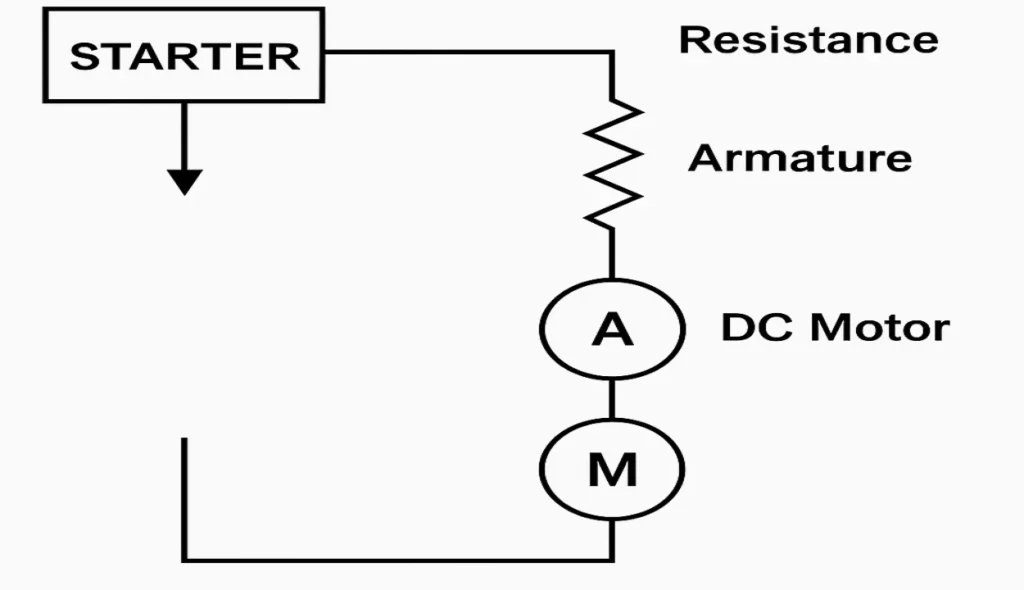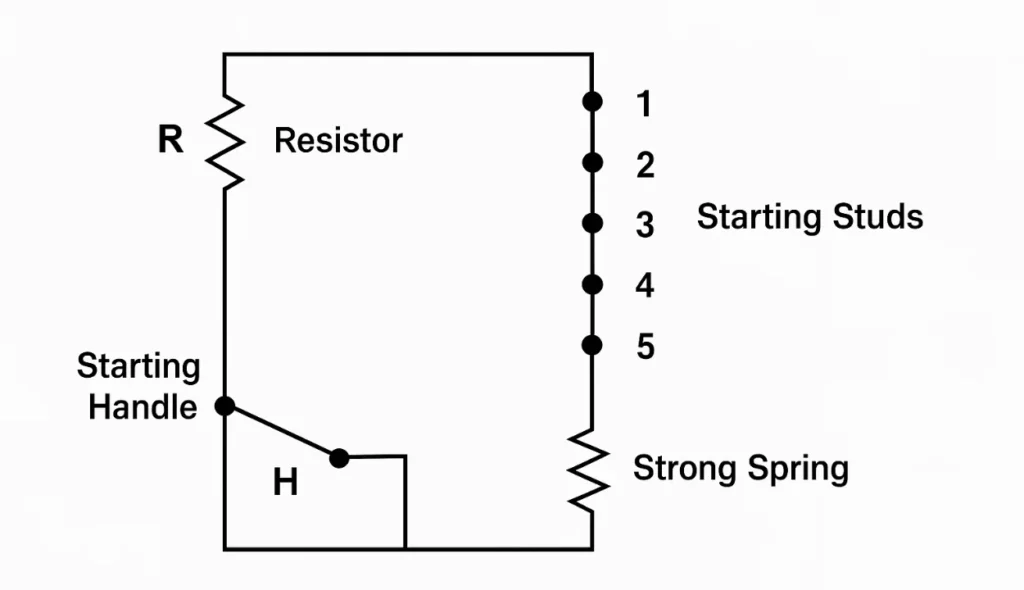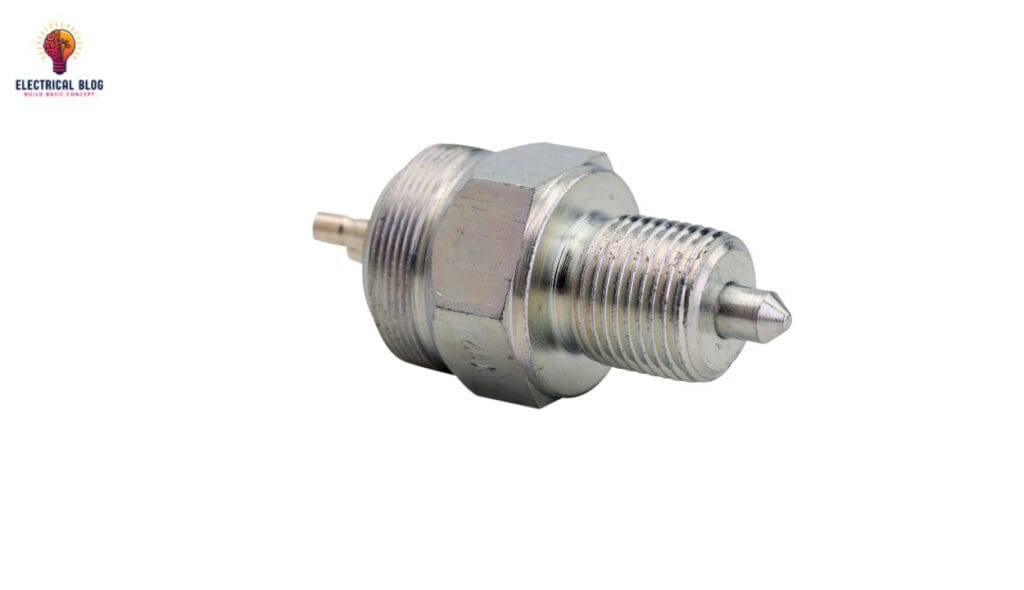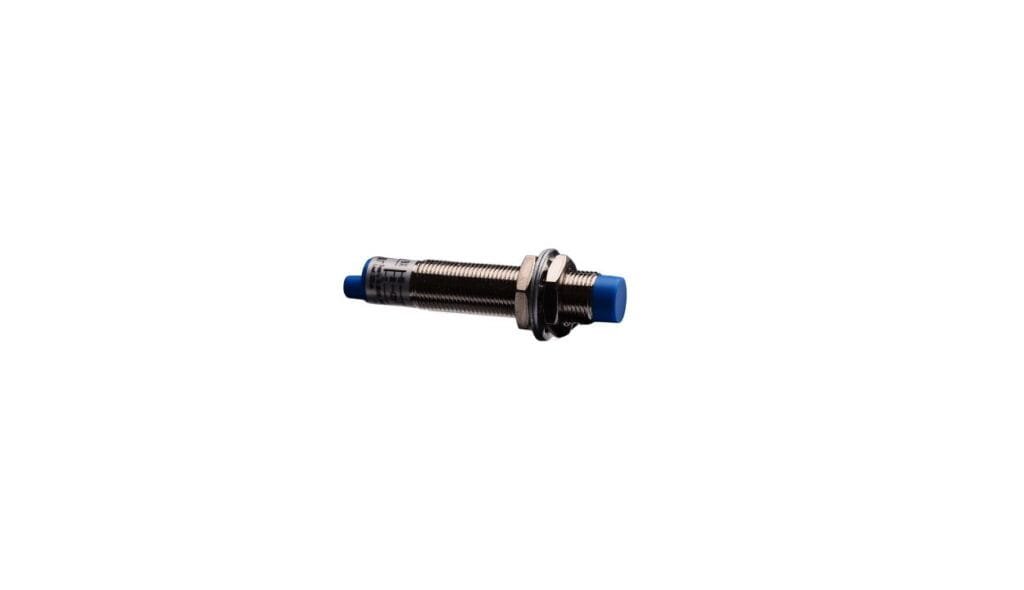Introduction
From my hands-on experience working with electric motors, I’ve seen how vital a starter is to protect them from overload and short circuits. A 2 point starter is one of the simplest types of starters, often used where basic protection and control are enough. Unlike 3-point or 4-point designs, this type skips the No Voltage Coil (NVC), which is the key difference in construction. It uses a face plate, rotator, and switch with current-limiting transistors, making the working straightforward and reliable. This article gives clear information about its applications, layout, and why it’s preferred for small motor setups needing a reliable device.
What is a 2-point starter?
2 point starter is used to safely restrict the starting current. It works by connecting a resistor in series with the armature to protect the motor from overvoltage and high surge at starting time. This resistance is gradually decreased as the motor gains speed, keeping the current within a secure value and ensuring proper function and control of motor speed.

2 Point Starter Working
From my experience in maintaining industrial machinery, a 2-point starter works by using a rheostat and a set of contacts to control the flow of current in the motor. When the contacts are closed, the motor is directly connected to the power supply to start instantly. As the speed increases, the contacts are opened gradually, introducing resistance into the circuit.
This increasing resistance starts decreasing the current, helping to control the speed more precisely. Such a starter is widely used in applications that require accurate speed control, especially in industrial equipment. In my setup, it has always ensured a smooth start without overloading the system or harming the motor.
2-Point Starter Circuit Diagram
When I worked with a 2-point starter, its circuit looked quite similar to the diagrams of three-point and four-point starters, which reminded me of them. It uses a starting resistance labeled R, which is subdivided between studs like 1, 2, 3, 4, and 5 for smooth current control during operation. A starting handle (H) is moved across each stud using a strong spring (S) on one side while maintaining contact.
This motion ensures every contact is triggered correctly, and the starter includes a protective device with no load release function. The design might seem simple, but understanding how each part—from the stud to the spring—functions is key to proper setup. In my early days, adjusting the handle and checking the contact points were the first hands-on tasks I mastered.

Working
In a two-point starter, the handle turns clockwise from OFF to ON to start the DC motor. The armature is connected in series with a hold-on electromagnet, which holds the arm in the turn-ON position under spring tension. The L and F terminals link the motor to the supply, allowing current to flow and resisting overspeeding from load loss at the shaft.
If the current or voltage drops significantly, the electromagnet becomes weaker. This causes the arm to return to OFF due to spring pressure, which prevents damage. I’ve seen this circuit work well in industrial motors where safety and starting reliability are crucial.
Advantages and Disadvantages of a 2 Point Starter
Advantages of a 2-Point Starter:
It helps reduce the high starting current, which protects the motor and the power supply.
It prevents voltage dips during starting and keeps the circuit stable.
It is simple in design, easy to use, and good for motors with soft-starting needs.
Disadvantages of a 2-Point Starter:
It does not turn off automatically during faults, which can cause damage.
There is no overload protection after starting, which can reduce the motor’s lifespan.
It can fail in tough conditions where the motor needs an adjustable start.
It is not suitable for all types of motors, especially heavy-duty ones.
It may not protect the circuit when the motor is drawing the maximum current.
Applications of a 2 Point Starter
Commonly used in cranes where DC series motors need to have controlled starting and stopping.
Found in railways to start and stop DC rail motors smoothly.
It’s helpful in situations where a motor is expected to go over speed because of a sudden loss of load.
Helps in applications with free shaft movement, which can cause overspeed problems.
Normally used in DC machines that need a safe start in tough working conditions.
Conclusion
The 2-point starter is a reliable and cost-effective solution for controlling the starting current of DC motors. Its simple design, featuring a series resistor and contact mechanism, ensures smooth operation by limiting high surge currents. This makes it ideal for smaller motors and applications that don’t require advanced protection or adjustable speed control.
However, its limitations become apparent in more demanding environments. The lack of overload protection and automatic fault detection can lead to motor damage if not properly managed. Despite this, the 2-point starter remains a dependable choice for basic motor applications where reliability and simplicity are prioritized over complex features.


